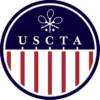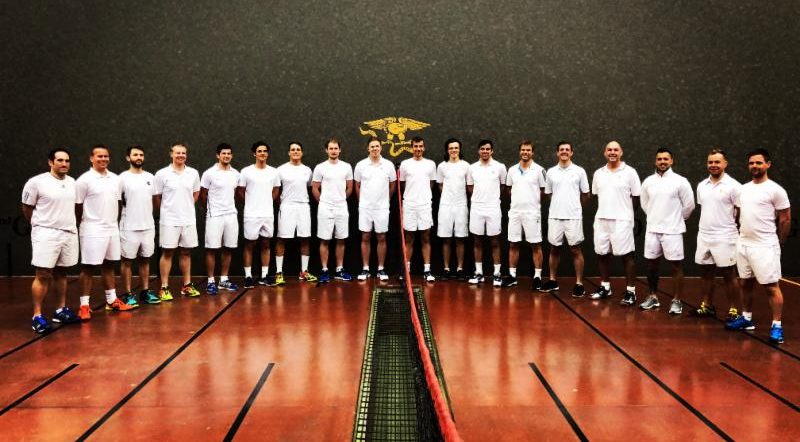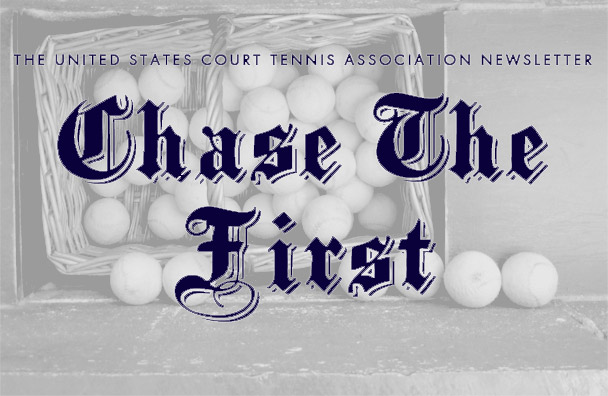Policies for Tournament Organizers
USCTA-Approved Tournament & Handicap Policies
(as of 9/15/11)
For Tournament Organizers:
Level Championships
– In order to be eligible, players must have at least 3 recorded singles matches in RTO in the 3 months prior to the tournament entry deadline.
Doubles Handicaps
– Round at the end of the calculation.
– USCTA national (doubles) tournaments will use the better of a player’s singles or doubles handicap. If a player does not have one recorded singles match in RTO in the prior six months (to the setting of the draw) and three recorded singles matches in the prior twelve months, then a doubles handicap will be used. The Tournament Chair shall be the final arbiter of handicap questions.
Note: This policy applies only to USCTA national tournaments. Clubs may use handicaps as they see fit for other tournaments but we encourage clubs to follow this policy and hope that it eventually becomes the norm. Tournament Organizers may need to check in with RTO (Tim Graham) to verify the six and twelve month requirement for recorded singles matches.
Title Holder Seeding (for USCTA Amateur S&D tournaments)
– Seed by handicap with rounding preference given to title holders.
US Open
– See US Open Polices document.
Policies for RTO Administrators Regarding Posting of Matches
For RTO Administrators and others interested in handicaps:
Injured Player Match Postings
– Matches are to be counted on RTO if a player is injured but still plays the match.
National League Postings
– All National League playoff matches are to be counted on RTO, regardless of marker / no marker, and as Competitive / IHSC-Sanctioned.
Tournament Score Postings
– Tournament matches should be entered on RTO within 48 hours of the tournament’s completion and in the order they were played.
Incomplete Matches
– Defaulting player concedes all remaining games in that set to the opponent. If player defaults after completion of a set, the next set is 6/0 to the remaining player.
IHSC-Sanctioned Competitive Match Eligibility
– See 10/26/10 list of US tournaments where handicaps of CAT1 players (5.4 and better) can move.
Maximum Handicaps
– Suggested maximum of 80 for true beginners and maximum use of the
provisional status.
Handicap & Ranking Committee Views:
Manual Adjustments
– Discouraged but pros have latitude to do them if them necessary. If done, an explanation needs to be provided on the player’s RTO page.
– Leaning towards not allowing them for Cat 1 and requiring IHSC approval for players in the 5.5-10 handicap range. Other manual adjustments are purview of national associations.
Category 1 and Social Matches
– Social matches involving Category 1 players are not to be counted on RTO.
Polcies Regarding Dormant Handicaps
The treatment of handicaps of dormant players
The following changes have been agreed in respect of players with dormant handicaps i.e. no results recorded on RTO for twelve months.
1. Adjustment to handicaps
With effect from 1st October 2011, any player, irrespective of handicap category, who is inactive (i.e. fails to records at least one Singles result on RTO in a twelve month period) should have his or her Singles handicap automatically adjusted upwards by two handicap points by RTO and, if he or she remains inactive, by a further one point on the each anniversary of the original adjustment. Where a player only has a Doubles handicap and fails to record a Doubles result in a period, the relevant adjustment will be applied to his or her Doubles handicap.
The IHSC remains of the opinion that it is the responsibility of each the club professional periodically to review (in conjunction with a local Handicap Committee) and encourage actions to remedy incorrect handicaps, such as regular recording of results, use of provisional status and, in the last resort and where permitted, making manual adjustments. RTO will be amended so that a player’s record will show, upon enquiry, all activity in the preceding twelve months. RTO show clearly the impact of any automatic adjustments.
2. Dormant players who enter tournaments
a) Category 2 players and above
Different approaches have been adopted by the member associations to deal with the issue of validating the handicap of a tournament entrant who has few or no recent recorded results on RTO and the arguments around this have been well rehearsed elsewhere. The broad agreement seems to be that tournament entry should be encouraged and that national associations may make their own rules on the validity of a tournament entrant’s handicap. However, particular care must be taken where seeding in tournaments is based on handicap to ensure that proper account is taken of entrants’ handicap status. The IHSC recognises that this may result in tournament organisers deciding that any player falling within Category 2 and above and having a dormant handicap should not be seeded.
b) Elite players
Additional concerns arise where the dormant player is a member of the elite Category 1 group, where, importantly, handicap can be used as the test for tournament seeding (although much ranking in major international tournaments is done on World Ranking Points). The existing resolution of the IRTC that handicap movements for this group should be generated exclusively from tournament matches, together with a relative lack of accessible tournaments may result in a player becoming dormant without losing his or her effectiveness as a tournament match player.
The adjustment set out in 1 above will apply to Category 1 players. However:
i) a dormant Category 1 player entering a tournament will always be considered for seeding, based on his or her handicap after any adjustment relating to their dormant period; but
ii) any dormant Category 1 player entering a handicap tournament will be required to play off his or her handicap before taking into account any adjustment relating to their dormant period.
It is acknowledged that tournament organisers will need to give careful consideration of the data available within RTO if such adjustments are to be correctly dealt with, although we believe it would apply to relatively few tournament entrants.
3. Players who resume after an extended absence
It has been suggested elsewhere that players in Category 2 and above who have been dormant for twelve months or more should be reintroduced to RTO with a period where their handicap is treated as provisional. It is suggested that this period would be at least six matches, during which time they would be permitted to enter tournaments providing they can meet their national association’s rules on the validity of their handicap.
4. Transitional arrangements
Players who have not recorded a result in the 12 months ending on or after 1st October 2011 will have their handicaps adjusted as described above.
IHSC
1st July 2011
IHSC-Sanctioned Competitive U.S. Matches
The US tournaments listed below are counted as IHSC-Sanctioned Competitive for RTO. This means that handicaps of Category 1 players (5.4 and better) can move based on their results in these tournaments. All tournaments are singles only unless otherwise specified (S – singles, D – doubles).
– All National League matches (S&D)
– All National League qualifying matches (some teams with 3 players have playoffs to determine roster spots)
– Jimmy Knott
– US 55’s (S&D)
– US Ladies Open (S&D)
– Silver Racquet
– Jimmy Dunn (D)
– New York Open Handicap (but only in matches between two Cat 1 players)
– National Open
– Whitney Cup (D)
– Gold Racquet
– US 40’s, 50’s, 60’s 70’s (S&D)
– Bathurst Cup (S&D)
– US Amateur (S&D)
– US Open (S&D)
– Northrup Knox (D)
– US Pro
– Pell Cup (D)
USCTA can ask IHSC to include the following tournaments in the event that Cat 1 players are playing in them:
– All Club Championship matches (S&D)
– Club Championship handicap singles matches (but only in matches between two Cat 1 players)
US Open Policies
Attached are revised US Open policies. These were approved by the USCTA at its February 25, 2011 Board Meeting.


